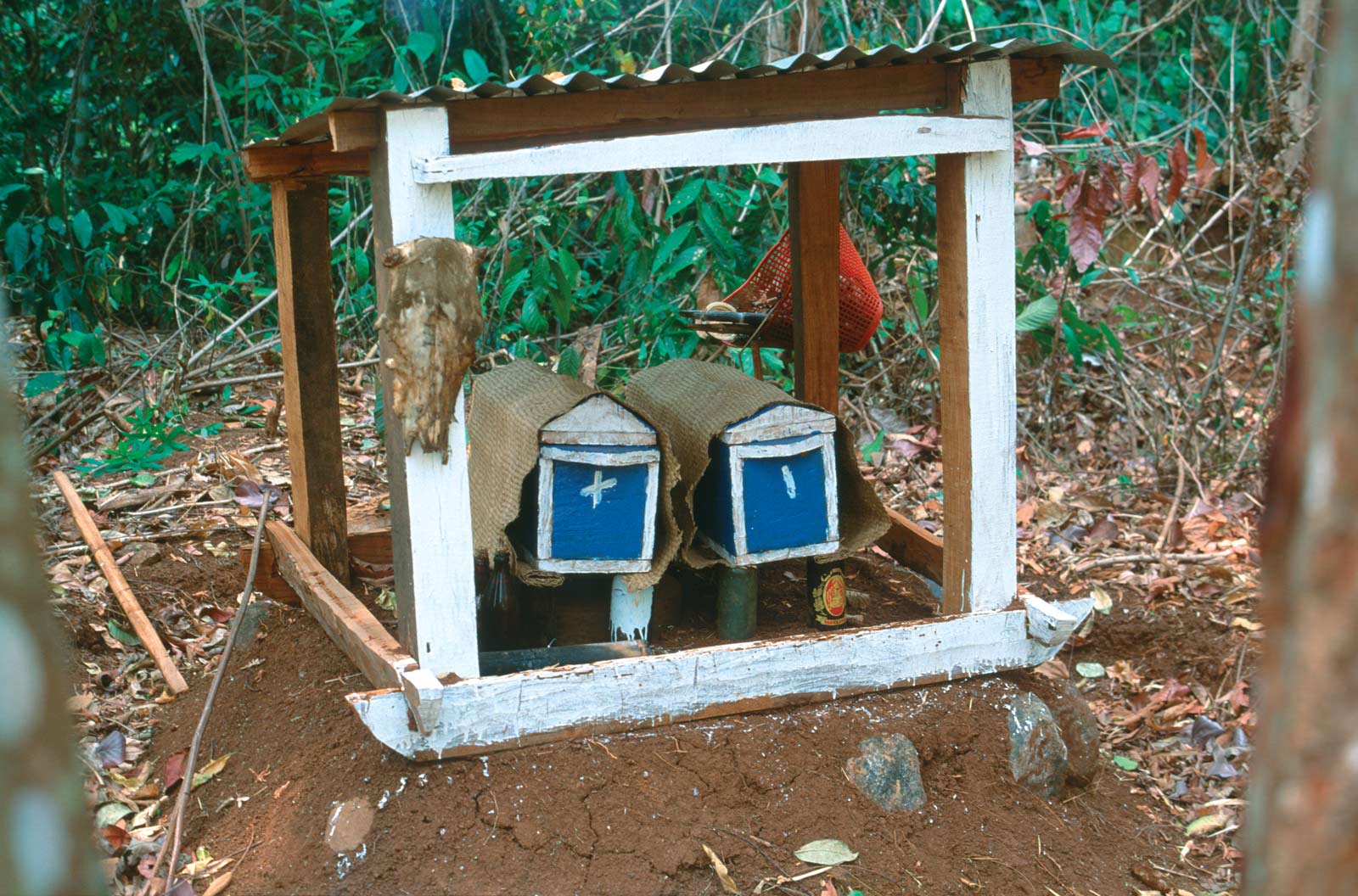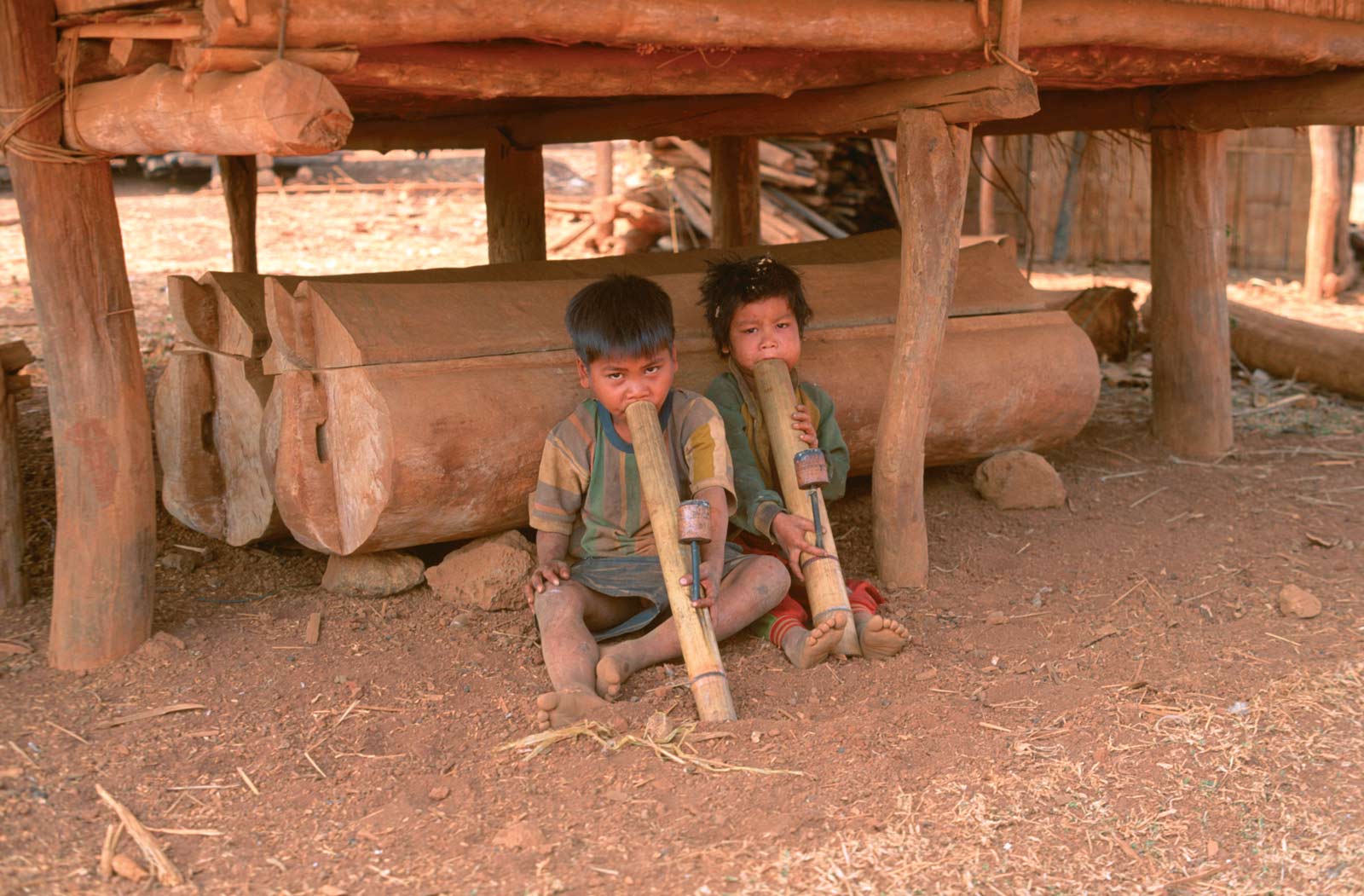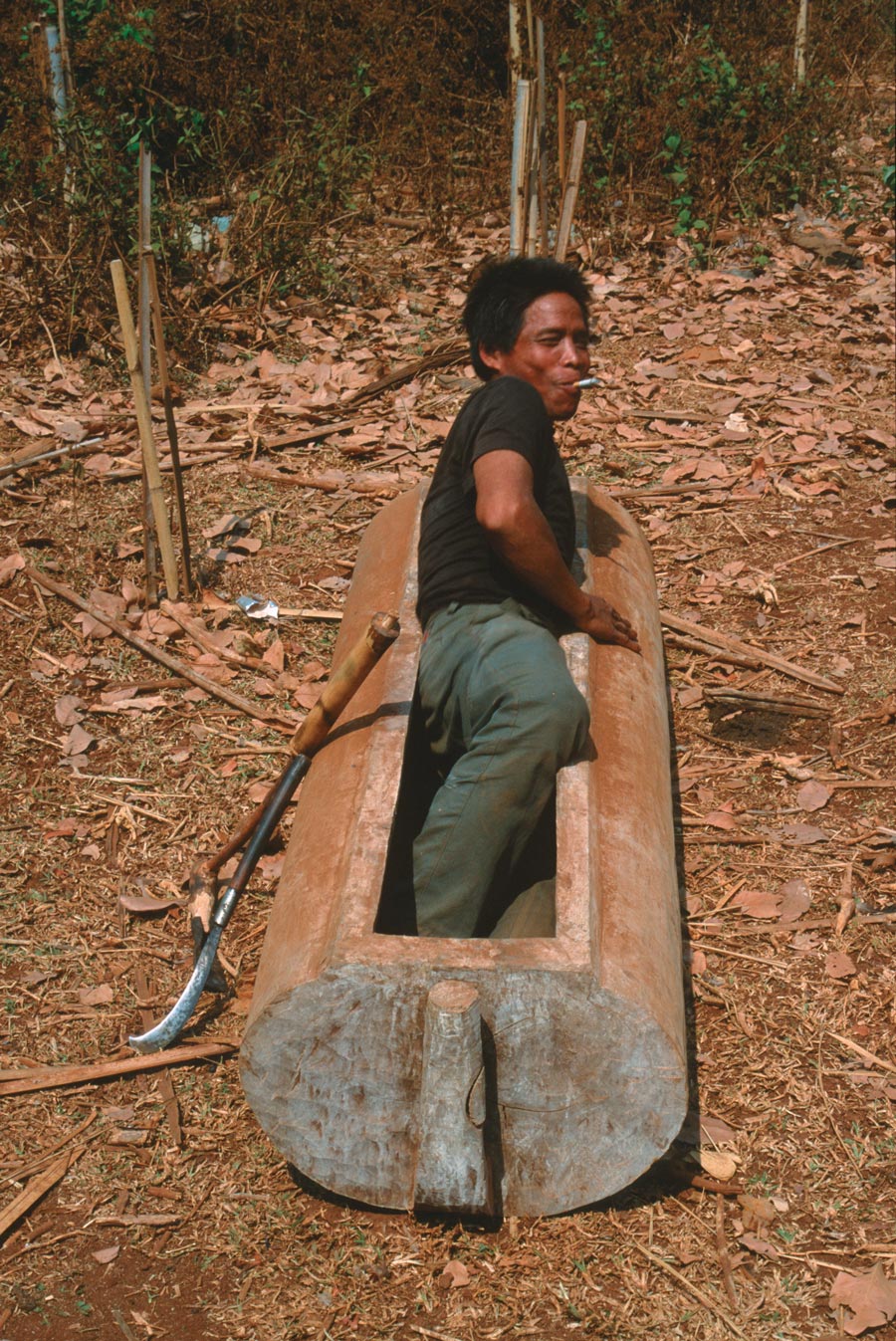Editor’s note: Pictures of chubby babies puffing away with pack-a-day habits are a staple of international coverage of some parts of Southeast Asia. For a number of tribes in Laos, though, smoking is just one thread in a rich tapestry of traditions that sees toddlers fitted into their first coffins before they can walk. In March 2008, Southeast Asia Globe travelled to the nation’s Bolaven plateau to witness firsthand how traditional beliefs clash with contemporary cultural taboos.
At one of the huts dotted along a red, country road leading to the small village of Ban Ko Phoung in Southern Laos, a man is busy hollowing out a tree trunk with a primitive axe. From the corner of his mouth a cigarette dangles. He is not making a canoe. Dear me, no. He is simply busy making his coffin a little larger so that he can be quite sure that he will fit in it when he finally draws his last breath – no doubt with a cigarette in his mouth.
When he feels that there is room enough, he rests his axe against a tree and crawls into the coffin for what you might call a “test run” – almost like fitting a new jacket. Finding it a wee bit too tight at the shoulders, he climbs out and carefully chops out some more. He tests his eternal home two more times before he is satisfied with the results. While he lies there twisting his shoulders and squirming to get comfortable, he is puffing away on another cigarette.

Al fresco burial: the dead are left above ground to enjoy their family’s gifts. Photo: Pascale Pinay/Lobo Press
If the Marlboro Man, who died of lung cancer not so long ago, went to heaven, it would be something like here. For this is Marlboro Country made real.
We learn that the man customising his coffin is 36 years old. Which means, in Ban Ko Phoung, that he has smoked cigarettes for about 35 of them. Here, the children are taught to smoke before they can walk – even before their mothers have stopped breast-feeding them.
But the Kha Loum and Alak tribes here on the Bolaven plateau are famous for more than their smoking; they are famous for their coffins. Not their coughings, their coffins. In fact, directly translated, they are called the Coffin People.
There are coffins stacked under each and every house. By counting the coffins you can tell how many people live there. There are coffins of all sizes, even for small children, who inherit those made for elder siblings if they are fortunate enough to survive. They, in turn, receive coffins carved out for older family members.
Quite often new ones need to be made; in a world where the only known medicine is a tobacco cocktail and the chanting of witchdoctor, infant mortality is high.
As is the case in many parts of Southeast Asia, the people in this area bury their dead the same day that they die. With no undertaker to sell coffins, you must be sure to have one ready.

There are seven or eight villages on the plateau inhabited by the Alaks and Kha Loums. Everybody smokes without exception. Under the houses, leaning against coffins that perhaps they will soon use, are small boys and girls puffing away on big bamboo pipes as tall as themselves. The tobacco crackling away in the bowls is home-grown, long-leaved and powerful.
A young girl in her school uniform puffs eagerly away on her pipe before taking the two-minute walk to school. Through our interpreter she complains loudly that they have a new teacher from outside the area and he has forbidden them to smoke during the lessons! So now she fills up her nicotine quota before facing two hours of torture without the weed. Come break-time she can go home and have a proper smoke with her mum.
However, it is not the freshly harvested, local, ecological tobacco that stands on the top of everyone’s wish-lists, but Marlboro, the real ones in a red and white packet, well stocked with additives.
Should you ever need official permission for anything in the area, it is best to arrive at the authorities with a packet of cigarettes. The Marlboro Man opens all doors. All negotiations and the delivery of applications start with packets, or cartons, being placed on the table.

A burial here is also special – for the dead are not buried. The coffins are placed under a tin roof and allowed to lie there for the first six months without their lids. The dead are given some personal belongings to take with them to the next world, the most important of these being a big pipe stuffed with tobacco. Those with a little more money may even take a carton of Marlboro with them to advertise their status on the other side.
To ensure that the spirits in the area will leave the souls of the dead and the tobacco in peace, tobacco and cigarettes are scattered around the vicinity of the coffin. The roof over the coffin is not built to protect the dead from tropical rainstorms, but to ensure that the deceased’s tobacco does not get wet.
Each week members of the immediate family visit the dead with a gift of a little fresh tobacco so that the corpse’s spirit doesn’t come back to the village to cadge for another nail in the coffin. After six months, when there is nothing left but bones, the lid is placed on the coffin and the weekly visits come to an end.
Since Laos opened its doors a few years ago, the UN and other aid organisations have rushed in with armies of researchers. They discovered that one of the biggest causes of malnutrition in the south of Laos is tobacco. Not because it diminishes the appetite, but because so much is planted that there is no room left for rice and other crops. The consumption of tobacco may be decreasing in the Western world, but in Asia it is increasing rapidly.
Although it’s difficult to see how the folk of southern Laos can smoke any more than they do already, there may be room for a Marlboro campaign to stop local cultivation of the weed.
At least in that way the corpses of the Coffin People would look a bit fatter and healthier when placed in their caskets.


